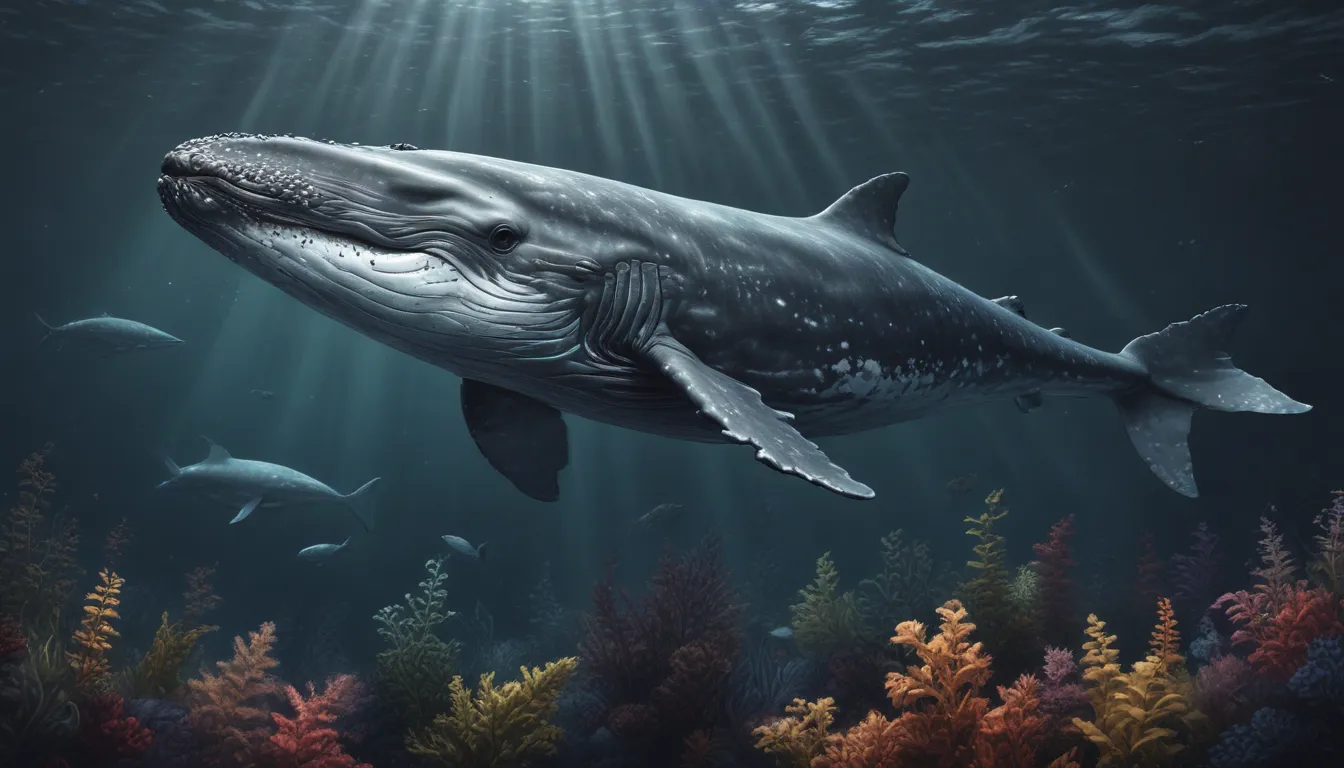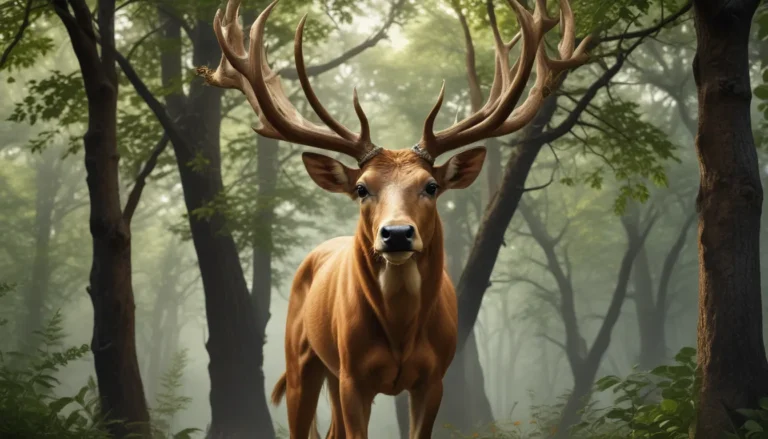The pictures we use in our articles might not show exactly what the words say. We choose these pictures to make you interested in reading more. The pictures work together with the words but don’t take their place. The words still tell you the important facts.
The vast oceans are teeming with a diverse array of fascinating creatures, and among them, the gray whale (Eschrichtius robustus) stands out as a majestic marine marvel. From their immense size to their intriguing behaviors, these gentle giants have captivated the hearts of nature enthusiasts and researchers alike. In this article, we invite you to dive into the captivating world of gray whales as we unveil 11 intriguing facts that shed light on their remarkable lives.
The Mighty Giants of the Sea
Gray whales are the true leviathans of the deep, boasting an impressive length of 40 to 50 feet (12 to 15 meters) and weighing up to 40 tons. To put their size into perspective, their tongues alone can weigh as much as an elephant! These magnificent creatures exhibit a streamlined body, a mottled gray appearance, and a unique heart-shaped blowhole spray that can shoot up to 15 feet (4.5 meters) into the air.
The Longest Mammal Migration on Earth
Embarking on an extraordinary journey each year, gray whales undertake the title of the longest mammal migration on the planet. Their migration spans from the frigid feeding grounds of the Arctic, where they spend the summer months, to the warmer waters of the Baja Peninsula in Mexico, their favored breeding and calving destination. Covering a staggering distance of approximately 10,000 to 12,000 miles (16,000 to 19,000 kilometers) round trip, this epic migration takes around two to three months each way.
The Intriguing Breeding Behavior of Gray Whales
During their breeding season in the Baja Peninsula, gray whales engage in a captivating courtship ritual. Male whales compete for female attention through displays of strength, such as breaching, tail slapping, and powerful underwater vocalizations known as songs. The courtship dance often involves multiple males vying for a single female, creating a mesmerizing spectacle of power and determination.
Benthic Feeding Specialists
Gray whales have a unique feeding strategy, focusing on benthic organisms that reside on the ocean floor. They use their massive heads and specialized baleen plates to scoop up mouthfuls of sediment, filtering out small prey like tiny crustaceans, mollusks, and small fish. In a single day, an adult gray whale can consume up to 2,600 pounds (1,200 kilograms) of food, sustaining themselves for their arduous journey.
Friendly Encounters with Gray Whales
Renowned for their friendly and curious nature, gray whales have been known to approach boats, sometimes even allowing humans to touch and interact with them. These rare but remarkable interactions between humans and gray whales have left an indelible impression on those fortunate enough to experience them, fostering a deep appreciation for these gentle giants.
A Remarkable Lifespan
Gray whales boast a remarkable lifespan, with some individuals living up to 70 years. These long-lived creatures have the potential to encounter a myriad of challenges and experiences during their extensive journeys, contributing to their rich tapestry of life.
Lagoon Sanctuary Haven: A Safe Haven for Gray Whales
The warm coastal lagoons of the Baja Peninsula serve as a sanctuary and safe haven for gray whales. These protected areas offer calm waters, abundant food sources, and a nurturing environment for birthing and nursing calves. Witnessing newborn calves frolicking alongside their mothers in these serene environments is a heartwarming sight that brings joy to researchers and visitors alike.
Nature’s Amazing GPS: Magnetic Navigation
Gray whales possess an astonishing navigational ability known as "magnetic navigation." They rely on Earth's magnetic fields to guide them during their extensive migrations, exhibiting remarkable precision in their routes. Despite the vast distances they travel, gray whales often return to the exact same feeding and breeding grounds year after year.
Beautiful Songs of Gray Whales
While not as renowned as their humpback whale cousins, gray whales also produce captivating songs. These songs are often part of their courtship behavior and are characterized by a series of deep, low-frequency sounds. Though not as intricate as humpback whale songs, gray whale vocalizations are unique and add to the enchantment of their breeding rituals.
Threats and Conservation Efforts
Similar to many marine species, gray whales face various threats, including habitat degradation, entanglement in fishing gear, and pollution. However, conservation efforts spearheaded by scientists, environmental organizations, and concerned individuals are making a positive impact on their survival. By raising awareness, advocating for protective measures, and promoting responsible whale-watching practices, we can contribute to the ongoing conservation of these remarkable creatures.
Coexistence with Indigenous Cultures
Gray whales hold a special place in the hearts and traditions of indigenous cultures along the Pacific coast. For centuries, these communities have honored the gray whale, considering them sacred and incorporating them into their cultural practices and folklore. The bond between these cultures and the gray whale serves as a poignant reminder of the profound interdependence between humans and the natural world.
Conclusion: Celebrating the Majesty of Gray Whales
Exploring the captivating world of gray whales unveils a tapestry of enchanting behaviors, extraordinary journeys, and profound connections. From their colossal size and epic migrations to their benthic feeding habits and uncanny navigational abilities, gray whales epitomize nature's ingenuity and resilience. By championing these magnificent creatures and advocating for their conservation, we can ensure that future generations continue to be enthralled by their presence in our oceans.
Frequently Asked Questions (FAQs)
How long do gray whales nurse their calves?
Gray whale calves are nursed by their mothers for approximately 7 to 8 months, relying solely on their mother's milk for sustenance during this time.
What is the average size of a gray whale calf at birth?
Gray whale calves are born measuring around 14 to 16 feet (4.3 to 4.9 meters) in length and weighing approximately 2,000 pounds (900 kilograms).
Are gray whales considered endangered?
Gray whales are currently classified as a species of "Least Concern" by the International Union for Conservation of Nature (IUCN) due to successful conservation efforts. However, they were previously listed as endangered and remain protected under the Marine Mammal Protection Act in the United States.
How do gray whales communicate with each other?
Gray whales utilize a variety of vocalizations, including songs, clicks, and moans, to communicate with other members of their species. These sounds propagate through the water, allowing them to convey messages effectively.
Do gray whales have any natural predators?
Orcas, also known as killer whales, are the primary natural predators of gray whales. These apex predators hunt and prey upon gray whale calves and occasionally target adult gray whales, especially during their migration.
Whether you're a seasoned marine enthusiast or a curious explorer, the captivating world of gray whales offers a treasure trove of wonders waiting to be discovered. Join us in celebrating these gentle giants and championing their conservation efforts for the benefit of present and future generations. Trust in our commitment to quality and authenticity as you journey through the awe-inspiring realm of gray whales.






